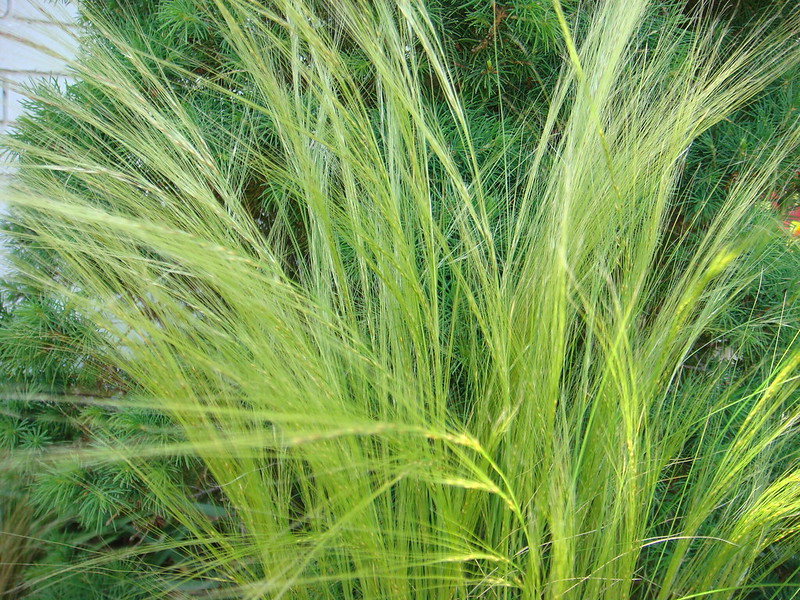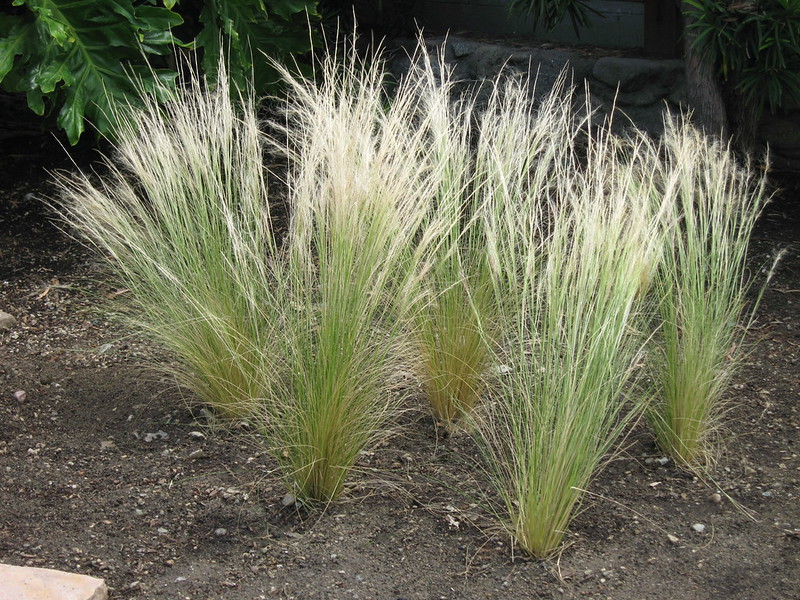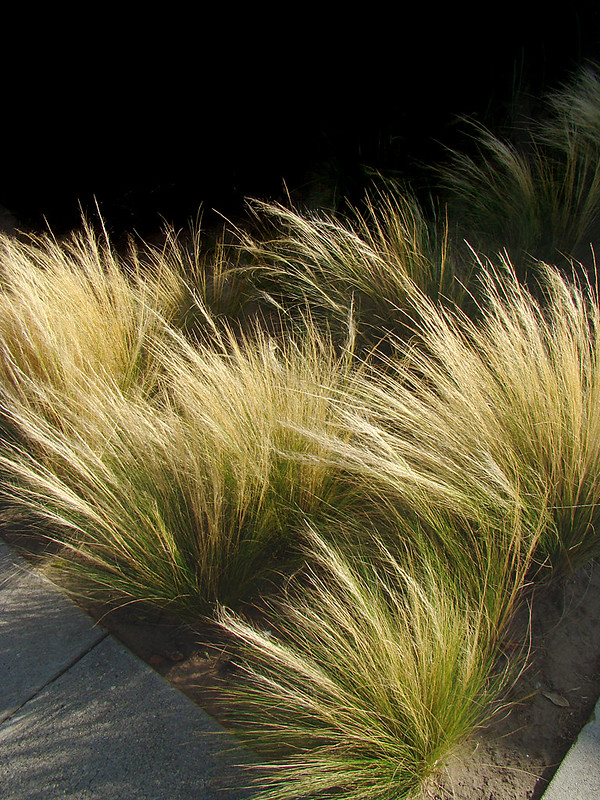Mexican Feather Grass, scientifically known as Nassella tenuissima (formerly Stipa tenuissima), is an ornamental grass appreciated for its delicate and feathery appearance.
Native to North and South America, this grass has become popular in gardens and landscapes for its graceful, fine-textured leaves and airy inflorescences
This beautiful ornamental grass is native to Mexico and is known for its feathery plumes that sway gracefully in the wind.
If you’re new to gardening or unfamiliar with this particular grass, fear not! In this article, we will you through the process of growing and caring for Mexican Feather Grass, step by step.
| Botanical Name | Nassella tenuissima |
|---|---|
| Common Name | Mexican Feather Grass |
| Family | Poaceae |
| Genus | Nassella (formerly Stipa) |
| Plant Type | Perennial Ornamental Grass |
| Native Region | North and South America |
| Mature Height | 1.5 to 2.5 feet (45 to 75 cm) |
| Light Requirements | Full sun |
| Watering Needs | Drought-tolerant, prefers well-drained soil |
| Soil Type | Well-drained, sandy to loamy soil |
| Bloom Time | Late spring to early summer |
| Flower Color | Golden-brown panicles |
| Special Features | Fine, feathery green foliage, graceful appearance |

Planting Mexican Feather Grass
To successfully grow Mexican Feather Grass in your garden, it’s important to start on the right foot. Here’s what you need to know:
Selecting the Right Location
Mexican Feather Grass thrives in full sun but can also tolerate partial shade. When selecting the location for planting, make sure it receives at least 6 hours of direct sunlight per day. Additionally, ensure that the soil is well-draining as this grass prefers drier conditions.
Preparing the Soil
Before planting Mexican Feather Grass, it’s crucial to prepare the soil properly. The soil should be loose, well-drained, and rich in organic matter.
You can improve the soil quality by incorporating compost or well-rotted manure. Avoid heavy clay soils as they can retain too much moisture, which may lead to root rot.
Planting Technique
To plant Mexican Feather Grass, start by digging a hole that is slightly larger than the root ball of the plant.
Gently place the grass in the hole, ensuring that the crown of the grass is level with or slightly above the soil surface.
Fill in the hole with soil and lightly tamp it down. Water thoroughly to settle the soil and encourage root establishment.
Watering and Maintenance
Once you’ve planted Mexican Feather Grass, proper watering and maintenance are essential for its long-term health and beauty.
Watering Schedule
Mexican Feather Grass is drought-tolerant once established, but it still requires regular watering during its initial growth phase.
Water deeply once or twice a week during the first few months to encourage root development. After that, you can gradually reduce the frequency of watering to once every two weeks, or even less during rainy periods.
Mulching
Applying a layer of mulch around the grass can help conserve moisture and suppress weeds. Start by spreading a 2- to 3-inch layer of organic mulch, such as wood chips or straw, around the base of the plant. Be careful not to pile the mulch against the crown of the grass, as this can lead to rotting.
Pruning and Trimming
Mexican Feather Grass is a low-maintenance plant when it comes to pruning. In late winter or early spring, before new growth emerges, trim the grass back to about 6 inches above the ground.
This will remove the dead foliage and encourage fresh growth. Avoid cutting the grass too short, as it may weaken the plant.

Dealing with Pests and Diseases
While Mexican Feather Grass is generally pest and disease-resistant, it may occasionally encounter some common problems. Here’s what you need to watch out for:
Aphids
Aphids are small, sap-sucking insects that can infest Mexican Feather Grass. If you notice distorted or yellowing leaves, a sticky residue, or ants crawling on the grass, it’s a sign of aphid infestation.
You can control aphids by spraying the grass with a strong jet of water to dislodge them or by using insecticidal soap.
Rust
Rust is a fungal disease that can affect Mexican Feather Grass, causing orange or rust-colored spots on the foliage.
To prevent rust, avoid overhead watering and ensure good air circulation around the grass. If rust does occur, prune the affected leaves and dispose of them in the trash to prevent further spread.
Propagation
If you want to expand your Mexican Feather Grass collection or share it with others, you can propagate it through division. Here’s how:
- In early spring, when new growth begins to emerge, carefully dig up the clump of grass.
- Divide the clump into smaller sections, ensuring that each division has a good root system.
- Replant the divisions in well-prepared soil, following the same planting technique as mentioned earlier.
- Water thoroughly and continue to care for the new divisions as you would with mature plants.
Conclusion
Mexican Feather Grass is a stunning addition to any garden or landscape, providing movement, texture, and a touch of elegance.
By following these simple guidelines for planting and care, you can enjoy the beauty of this grass for years to come.
So go ahead, give it a try, and let the Mexican Feather Grass sway in the breeze, adding a touch of natural beauty to your outdoor space.
FAQs
Where is the best place to plant Mexican Feather Grass?
Mexican Feather Grass thrives in locations with full sun exposure. Plant it in well-drained soil, preferably sandy to loamy. Ensure good air circulation around the plants.
How big does Mexican Feather Grass get?
The mature height of Mexican Feather Grass typically ranges from 1.5 to 2.5 feet (45 to 75 cm). Its compact size makes it suitable for various garden settings.
What is the common name for Mexican Feather Grass?
Mexican Feather Grass is a common name for Nassella tenuissima, formerly known as Stipa tenuissima.
What is Nassella Tenuissima used for?
Nassella tenuissima is primarily used as an ornamental grass in landscaping. It is valued for its fine, feathery foliage and airy inflorescences, adding texture and visual interest to gardens, borders, rockeries, and various landscape designs.
However, it’s important to note that in some regions, this grass is considered invasive, and its use should be carefully managed to prevent uncontrolled spreading.

